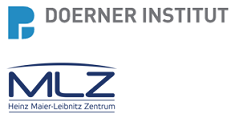Speaker
Description
We have studied amphorae of the Haltern 70 type found in excavations of a Roman settlement at Castro do Vieito in the northwest of Portugal, as well as from the known kiln sites in Baetica and Lusitania, situated in nowadays Spain valleys of the Guadalquivir and Rio Tinto, and the coast near Cadiz and Algeciras, as well as Algarve Portugal coast.
Haltern 70 amphorae were produced mainly in the Roman provinces of Hispania Baetica and Lusitania in the south of modern Spain and Portugal, during the second half of the first century BC and the first century AC. These amphorae were used to transport agricultural products from the south to supply the Roman military stationed in the north.
During excavations of the Roman settlement at Castro do Vieito, a large number of such amphorae was found. The aim of our study is to find similarities in the element contents of sherds from the kiln sites and from Castro do Vieito that could prove that the amphorae from Castro do Vieito are from the south of Spain and possibly from which site they preferentially came.
By PGAA at FRM2 reactor at the Technical University of Munich, about 20 elements were determined from each sherd. The data have been analysed by principal component analysis and cluster analysis. The results show a clear clustering for many kiln sites, which is a necessity for provenance analysis. The unexpected result is that the finds from Castro do Vieito differ strongly from all sampled kiln sites. This suggests that the most probably kiln sites, the ones studied, are not the provenance of Castro do Vieito amphorae, or that there are still unknown production sites in the region.

